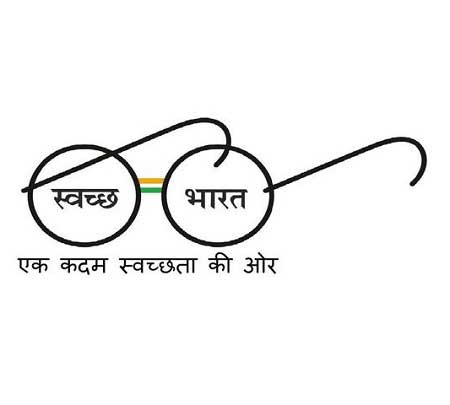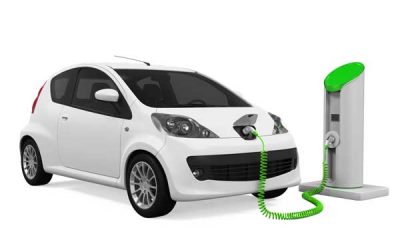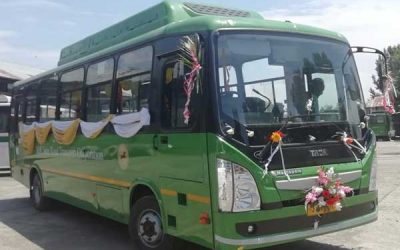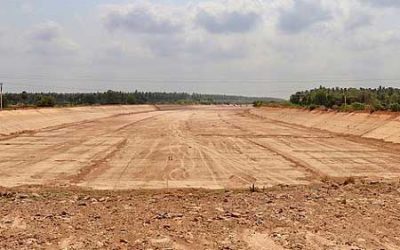Union Minister for Jal Shakti Gajendra Singh Shekhawat has said that Swachhata affects all aspects of the environment – be it groundwater, surface water, soil or air – as well as health and well-being of the communities in ODF regions. Praising the Swachh Bharat Mission for bringing a reduction in ground water contamination, he said, the WHO 2018 study had estimated that the Swachh Bharat Mission will save over 3 lakh lives by the time India is Open Defacation Free. Releasing two independent third-party studies conducted on the Swachh Bharat Mission (Grameen), the Minister said, the Mission will continue to positively impact people’s lives for a long time to come.
These studies, commissioned by UNICEF and the Bill and Melinda Gates, were aimed at assessing the environmental impact and communication footprint of the Swachh Bharat Mission (Grameen) respectively. The full reports as well as the summary reports of both the studies can be downloaded from mdws.gov.in and sbm.gov.in.
Union Minister for Environment and Forests Prakash Javadekar highlighted the significance of launching these studies on World Environment Day. He said that the United Nations, aware that the protection and improvement of the human environment is a major issue which affects the well-being of peoples and economic development throughout the world, designated 5th June as World Environment Day. He added that it is only fitting that UNICEF has chosen this day to release its findings on the positive impact the Swachh Bharat Mission has had on the environment of rural India.
Secretary, Government of India, Parameswaran Iyer, in his opening remarks, shared that the rural sanitation coverage in the country had crossed the 99% mark and that the Mission was in the final stretch of its completion with 30 States and Union Territories already having declared themselves free from open defecation. He said that the Mission is focusing on sustaining the gains of this progress and to extend the momentum to the ODF-plus phase which includes solid and liquid waste management.
Summary of the study findings
Under the “Environmental impact of the Swachh Bharat Mission on Water, Soil, and Food” by UNICEF, groundwater samples were collected and studied from ODF and non-ODF villages of Odisha, Bihar and West Bengal. The study found that, in terms of faecal contamination, non-ODF villages were, on average:
- 11.25 times more likely to have their groundwater sources contaminated (12.7 times more from contaminants traceable to humans alone)
- 1.13 times more likely to have their soil contaminated
- 1.48 times more likely to have food contaminated and 2.68 times more likely to have household drinking water contaminated.
- The study findings indicated that these substantial reductions may potentially be attributed to the improvement in sanitation and hygiene practices, as well as supportive systems such as regular monitoring and behaviour change messaging, which have all been critical aspects of the Swachh Bharat Mission (Grameen).
IEC footprint study by Gates Foundation
The “Assessment of the reach and value of IEC activities under Swachh Bharat Mission (Grameen)” conducted by Dalberg, supported by the Bill and Melinda Gates Foundation, estimated the scale of IEC activities within the Mission and assessed associated monetary and in-kind costs, and outputs such as reach. The study found that:
- SBM mobilized a spend equivalent worth INR 22,000 to 26,000 crores in monetary and non-monetary IEC activities.
- Of this spend equivalent, cash expenditure on IEC activities spent by the Government, private sector, and the development community was estimated to be between INR 3,500 – 4,000 crores.
- Of this cash spend, ~20% (~INR 800 crores) was spent by the Ministry of Drinking Water and Sanitation (MDWS), ~35% (~INR 1,250 crores) by the State Sanitation Departments, ~25% (~INR 1,000 crores) by other government ministries, and the other ~20% by the private sector (CSR and business expenditures) and the development sector collectively.
- An average person living in rural India was exposed to between 2,500 – 3,300 SBM related messages over the last five years.
















0 Comments